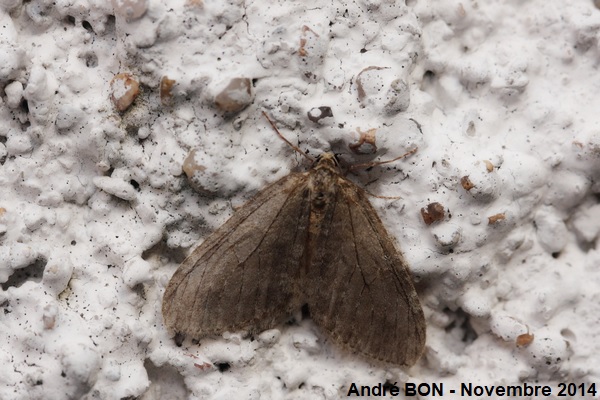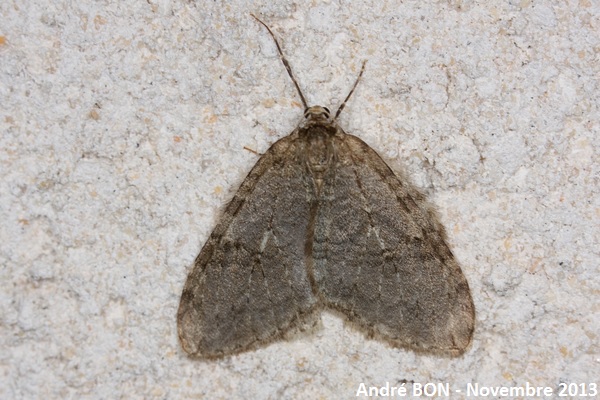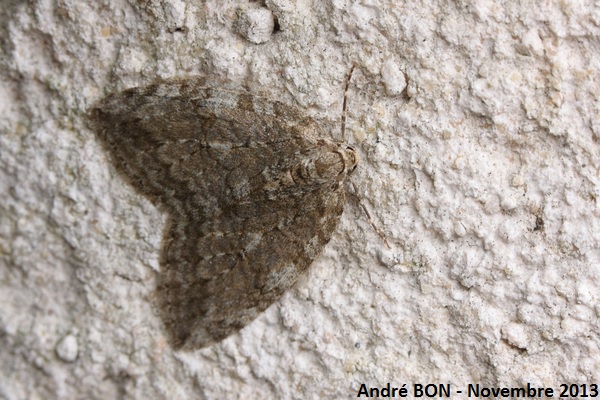


| November Moth (Epirrita dilutata (Denis & Schiffermüller, 1775)) |



|
|
Scientific name: Epirrita dilutata (Denis & Schiffermüller, 1775) Common name: November Moth French name: Epirrite diluée Order: Lepidoptera Suborder: Heterocera Family: Geometridae Subfamily: Larentiinae Wingspan: 32-38 mm. Biotope: Various habitats including deciduous forests, parks and gardens. Geographic area: Europe Flight time: Late September to November. Number of generations : 1 Caterpillar: Shiny green dorsally, with very pale whitish lines, and greenish white on the underside with a thin creamy lateral stripe. There are sometimes brown or reddish brown patches or rings. Host plant: Many trees and shrubs. |
The November Moth shows light grey to dark grey fore wings crossed by wavy stripes not always very visible. The hind wings are whitish. Females are slightly smaller than males and show more square-shaped wings forming more prominent shoulders at the back of the head. The Epirrita genus includes three species in France which are very difficult to differentiate. In addition to the November Moth you may also find the Autumnal Moth (Epirrita autumnata) and the Pale November Moth (Epirrita christyi). The only method known to be reliable to tell these species apart requires an upper side view of males' abdomen tip. The hind edge of the eighth tergite shows two small spines which are visible over the valves. These spines are long and spaced on Epirrita dilutata, long and close to each other on Epirrita christyi and short and spaced on Epirrita autumnata. Here is some additional information which may be helpful. Epirrita christyi is generally a smaller size and shows less marked markings. A dark uniform colour indicates Epirrita dilutata. A dark colour with a sharp V-shaped marking at the fork of vein 3 and 4 indicates Epirrita autumnata. These moths overwinter as eggs. They are attracted to light. |
| [To know more about the November Moth] [Next picture] [Top] |

|
I have first thought to the November Moth based on the dark uniform colour. But browsing through the various forums made me less confident and listing this one as Epirrita sp seems a better choice as the risk of ID error is too high. |
| [To know more about the November Moth] [Next picture] [Previous picture] [Top] |

|
The curved costal edge drawings well marked shoulders at the back of the head indicate one female. The observation of the upper side of a male's abdomen tip is required to be able to tell species apart. So we will only list this one as Epirrita sp. |
| [To know more about the November Moth] [Previous picture] [Top] |

|
I will try to precisely measure the wingspan on a next observation. |